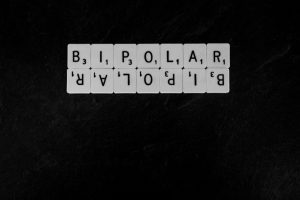Bipolar disorder is a mood disorder that affects approximately 46 million people globally. American women and men are equally subject to developing bipolar behavior, with approximately 10% of American adults having one of three mood disorders such as major depressive disorder, chronic mild depression, or bipolar disorder.
 In addition, children who have a parent with bipolar disorder have a higher risk of developing mental health problems. This generational effect is due to genetic, biological, and psychological factors.
In addition, children who have a parent with bipolar disorder have a higher risk of developing mental health problems. This generational effect is due to genetic, biological, and psychological factors.
Bipolar disorder is defined by the National Institute of Mental Health as a brain disorder that causes unusual shifts in mood, energy, activity levels, and the ability to carry out day-to-day tasks.
To diagnose bipolar disorder accurately, a skilled psychiatrist or mental health professional who specializes in working with this multi-faceted and complicated disorder will complete a detailed assessment. This will include obtaining a detailed personal and family history and assessing symptoms, lifestyle behaviors, and habits that may point to a diagnosis of bipolar disorder.
There is no cure for bipolar disorder, but there are various treatments for bipolar behavior that are effective once an accurate diagnosis is made. There are diagnostic categories in the Diagnostic and Statistical Manual of Mental Disorders (DSM-5) that a psychiatrist or mental health professional considers when evaluating a patient with a mood disorder.
Olivia’s Secret: Bipolar Behavior
Madison had just returned home from walking her daughters to elementary school when her cell phone rang. She bargained with two-year-old Zach for the keys to open the front door. Madison juggled the phone and the keys, struggling to unlock the door and answer the call. Her sister Olivia was calling.
Olivia was 26, engaged to be married, and very much in love. Recently, she had asked Madison if her nieces could be the flower girls at the wedding. As Madison opened the door and answered the phone, she heard Olivia crying uncontrollably. Zach settled in with a snack as Madison sat down and listened. Olivia quickly unraveled, exposing the secret she had lived with for more than ten years. Her life was spiraling out of control and the wedding was off – again.
Olivia was diagnosed with bipolar I disorder at the age of 18. Over eight years later, her second engagement was broken. Through tears of shame, she finally told Madison about her diagnosis and explained that Tim, her now ex-fiancé, couldn’t deal with her mood swings when she was off her medication.
Tim’s father, a psychiatrist, did not diagnose Olivia but he concurred with the Bipolar I diagnosis based on his observation of her behavior over the last year. Finally, after years of speculation, Madison had confirmation of Olivia’s diagnosis of Bipolar I disorder. It all started to make sense.
 Madison and Olivia’s mother, Carrie, had kept Olivia’s secret somewhere in the back of her mind. She never took it seriously. When Madison confronted Carrie with the truth, Carrie denied the doctor’s diagnosis. Carrie had struggled with mood disorders since her late teens but refused to seek a psychiatric evaluation because of the stigma attached to mental illness. She was afraid it would ruin her successful career and so had denied her own symptoms of bipolar behavior.
Madison and Olivia’s mother, Carrie, had kept Olivia’s secret somewhere in the back of her mind. She never took it seriously. When Madison confronted Carrie with the truth, Carrie denied the doctor’s diagnosis. Carrie had struggled with mood disorders since her late teens but refused to seek a psychiatric evaluation because of the stigma attached to mental illness. She was afraid it would ruin her successful career and so had denied her own symptoms of bipolar behavior.
Carrie disregarded the medical advice and supported Olivia’s decision to stop taking the Lithium prescribed. Carrie convinced Olivia that she didn’t have bipolar disorder. Olivia’s manic episodes made her feel euphoric and invincible, which she preferred.
The story of Olivia illustrates how critical openness and understanding within the family unit is to treatment. Family members play a key role in the diagnosis and treatment of bipolar disorder. Do you know someone like Madison or like Olivia? What role does bipolar disorder play in your life?
Types and Symptoms of Bipolar Disorder
Each type of bipolar disorder has its own set of episodic neurologic symptoms that may include mania, hypomania, major depression, and mixed states. According to Dr. Francis Mondimore, “Bipolar is the chameleon of psychiatric disorders, changing its symptoms from one patient to the next and from one episode of illness to the next even in the same patient.
It is a phantom that can sneak up on its victim cloaked in the darkness of melancholy but then disappear for years at a time – only to return in the resplendent but fiery robes of mania. Sometimes opposite moods seem to be combined as inseparable as smoke and fire.”
The Spectrum of Bipolar Behavior
Bipolar disorder has been described as a spectrum disorder, as people can experience varying moods on this continuum over time. The following table is a helpful guide to understanding the spectrum of bipolar disorder and its symptoms.
| Episode | Mood | Thinking | Bodily | Psychosis |
| Mania | Elated
Euphoric Irritable Grandiosity |
Heightened concentration
Accelerated thinking Pressured speech Racing thoughts |
Increased energy
Decreased sleep Erratic appetite Increased libido |
Delusions
Hallucinations |
| Hypomania | Elated
Irritable |
Accelerated thinking
Pressured speech |
Increased energy | |
| Depression | Depressed
Dysphoric Guilty Anhedonia Withdrawal Suicidal |
Poor concentration
Poor memory Indecision Slowed thinking |
Insomnia
Hypersomnia Weight loss Weight gain Low libido Fatigue Constipation Headaches Increased pain |
Delusions
Hallucinations Catatonic states |
| Mixed States | Depressed
Irritable Hostility |
Pressured speech
Accelerated thinking |
Increased energy
Anxiety attacks Insomnia |
Delusions |
Bipolar Disorder: A Guide for Patients and Families, 3rd edition by Francis Mondimore, M.D.
Dr. Mondimore in his book Bipolar Disorder: A Guide for Patients and Families explains bipolar.
Diagnostic Categories of Bipolar Disorder
 The following are diagnostic categories of bipolar disorder, according to the DSM-5, that include Bipolar I Disorder, Bipolar II Disorder, Cyclothymic Disorder, and Other Specified Bipolar and Unspecified Bipolar and Related Disorders.
The following are diagnostic categories of bipolar disorder, according to the DSM-5, that include Bipolar I Disorder, Bipolar II Disorder, Cyclothymic Disorder, and Other Specified Bipolar and Unspecified Bipolar and Related Disorders.
Bipolar I Disorder
It is characterized by mixed episodes of mania and major depression. Mania is marked by periods of euphoria, extreme excitability, excessive talkativeness, irritability, impulsivity, intense moods, disorganized thoughts and behaviors, risky behavior, grandiose thoughts, aggressiveness, addictions, hallucinations, and delusions. A person’s mood may quickly shift from mania to depression.
The illness usually begins in the late teens or early twenties and is difficult to diagnose because it features all mood disorders. To diagnose bipolar disorder type I, a person must have had at least one manic episode in their lifetime preceded or followed by a hypomanic or major depressive episode. The illness can accelerate when untreated, with episodes becoming more and more frequent as patients age. Untreated episodes can last an average of six months.
Bipolar II Disorder
It is characterized by fully developed depressive episodes and episodes of hypomania, which is a milder type of mania that may cause high energy, euphoric mood, and sometimes irritability. Bipolar II is not a milder form of Bipolar I disorder, nor does it turn into Bipolar I disorder.
Patients with Bipolar II are symptomatic more often and periods of depression are longer and more debilitating. Bipolar II is five times more common than Bipolar I. Patients often have relatives who suffer from bipolar disorder.
Cyclothymic Disorder
This is sometimes unofficially referred to as Bipolar III and is characterized by shorter periods of fluctuating moods bouncing between hypomania and low-grade depression. Mood changes occur in cycles and must be present for at least two years to be diagnosed.
Since symptoms are more frequent, last for a shorter amount of time, and are milder than biploar disorder, a person’s symptoms don’t usually meet the criteria for major depressive disorder or bipolar disorder. However, if left untreated, cyclothymia can turn into bipolar disorder. This disorder can begin in early adolescence.
Other Specified Bipolar and Unspecified Bipolar and Related Disorders
 These categories are used when someone presents with symptoms of bipolar and related disorders that may cause significant distress or impairment but do not meet the full diagnostic criteria for bipolar and related disorders.
These categories are used when someone presents with symptoms of bipolar and related disorders that may cause significant distress or impairment but do not meet the full diagnostic criteria for bipolar and related disorders.
Bipolar disorder is a complicated disease that doesn’t improve with time if left untreated. It can be a deadly disease and shouldn’t be ignored. The average reduction in life expectancy in people with bipolar disorder is between nine and twenty years due to reckless and risky behaviors, suicide, medication side effects, co-occurring medical conditions and diseases, and lacking a healthy support system.
Whether you are struggling with bipolar behavior yourself or just trying to cope with a family member’s recent diagnosis, don’t be afraid to seek Christian counseling. A strong support system is often the key to minimizing symptoms of bipolar disorder, increasing successes in life and relationships, and lessening the societal stigma around bipolar disorder.
Where there is no guidance, a people falls, but in an abundance of counselors there is safety. – Proverbs 11:14
Photos:
“Bipolar”, Courtesy of Nick Fewings, Unsplash.com, CC0 License; “Guitarist”, Courtesy of Jakayla Toney, Unsplash.com, CC0 License; “Put on a happy face”, Courtesy of Angel Lopez, Unsplash.com, CC0 License; “Pink Capsules”, Courtesy of am JD, Unsplash.com, CC0 License


